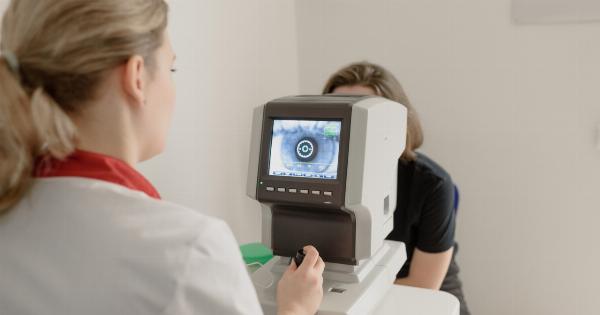Retinal detachment is a serious eye condition that affects millions of people worldwide. It occurs when the light-sensitive layer of cells at the back of the eye (retina) separates from the underlying tissue that nourishes it.
If not treated promptly, retinal detachment can cause permanent vision loss. In this article, we will discuss the causes, diagnosis, and management of retinal detachment.
Causes of Retinal Detachment
Retinal detachment can be caused by several factors, including:.
- Age-related changes in the eye
- Severe nearsightedness
- Eye injury or trauma
- Family history of retinal detachment
- Previous eye surgery, such as cataract surgery
- Diabetes
- Other eye disorders, such as lattice degeneration or inflammatory conditions
Diagnosis of Retinal Detachment
The diagnosis of retinal detachment is typically made through a comprehensive eye exam that includes:.
- Visual acuity test
- Dilated eye exam
- Tonometry (eye pressure measurement)
- Ultrasound or optical coherence tomography (OCT) imaging
If the eye doctor suspects retinal detachment, they will refer the patient to a retina specialist for further evaluation and treatment.
Management of Retinal Detachment
The treatment of retinal detachment depends on the severity and location of the detachment. In some cases, no treatment is necessary, and the detachment may resolve on its own.
However, if the detachment is more severe, treatment may be needed to prevent permanent vision loss. The most common treatments for retinal detachment include:.
Laser or cryotherapy
Laser or cryotherapy can be used to create a scar that seals the retina to the underlying tissue.
This treatment method is most effective for small detachments that are not located near the macula (the central part of the retina responsible for sharp, detailed vision).
Scleral buckle surgery
Scleral buckle surgery involves placing a small silicone band around the eye that compresses the eye’s outer coat (sclera) and pushes it closer to the detached retina.
This treatment method is most effective for larger detachments or those located near the macula.
Vitrectomy
Vitrectomy is a surgical procedure that involves removing the vitreous (the clear, gel-like substance that fills the center of the eye) and replacing it with a saline solution.
During the procedure, the retina is reattached to the underlying tissue using laser or cryotherapy, and a gas bubble is placed inside the eye to hold the retina in place while it heals. This treatment method is most effective for severe or complex cases of retinal detachment.
Conclusion
Retinal detachment is a serious eye condition that requires prompt diagnosis and treatment to help prevent permanent vision loss. If you suspect you may have retinal detachment, it is important to see an eye doctor as soon as possible.
With early detection and appropriate treatment, many people are able to recover their vision and resume their normal activities.



























